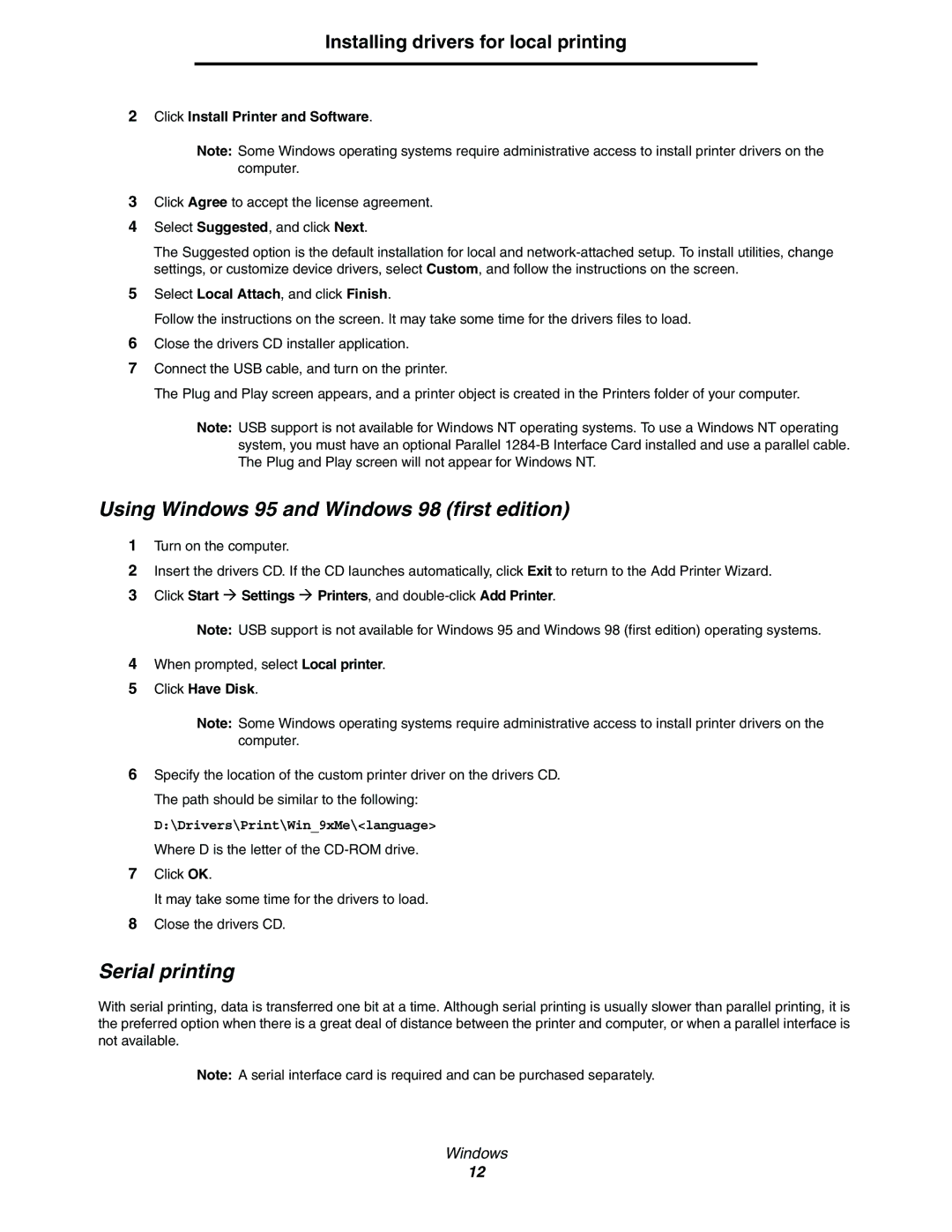Installing drivers for local printing
2Click Install Printer and Software.
Note: Some Windows operating systems require administrative access to install printer drivers on the computer.
3Click Agree to accept the license agreement.
4Select Suggested, and click Next.
The Suggested option is the default installation for local and
5Select Local Attach, and click Finish.
Follow the instructions on the screen. It may take some time for the drivers files to load.
6Close the drivers CD installer application.
7Connect the USB cable, and turn on the printer.
The Plug and Play screen appears, and a printer object is created in the Printers folder of your computer.
Note: USB support is not available for Windows NT operating systems. To use a Windows NT operating system, you must have an optional Parallel
Using Windows 95 and Windows 98 (first edition)
1Turn on the computer.
2Insert the drivers CD. If the CD launches automatically, click Exit to return to the Add Printer Wizard.
3Click Start Æ Settings Æ Printers, and
Note: USB support is not available for Windows 95 and Windows 98 (first edition) operating systems.
4When prompted, select Local printer.
5Click Have Disk.
Note: Some Windows operating systems require administrative access to install printer drivers on the computer.
6Specify the location of the custom printer driver on the drivers CD. The path should be similar to the following:
D:\Drivers\Print\Win_9xMe\<language>
Where D is the letter of the
7Click OK.
It may take some time for the drivers to load.
8Close the drivers CD.
Serial printing
With serial printing, data is transferred one bit at a time. Although serial printing is usually slower than parallel printing, it is the preferred option when there is a great deal of distance between the printer and computer, or when a parallel interface is not available.
Note: A serial interface card is required and can be purchased separately.
Windows
12
